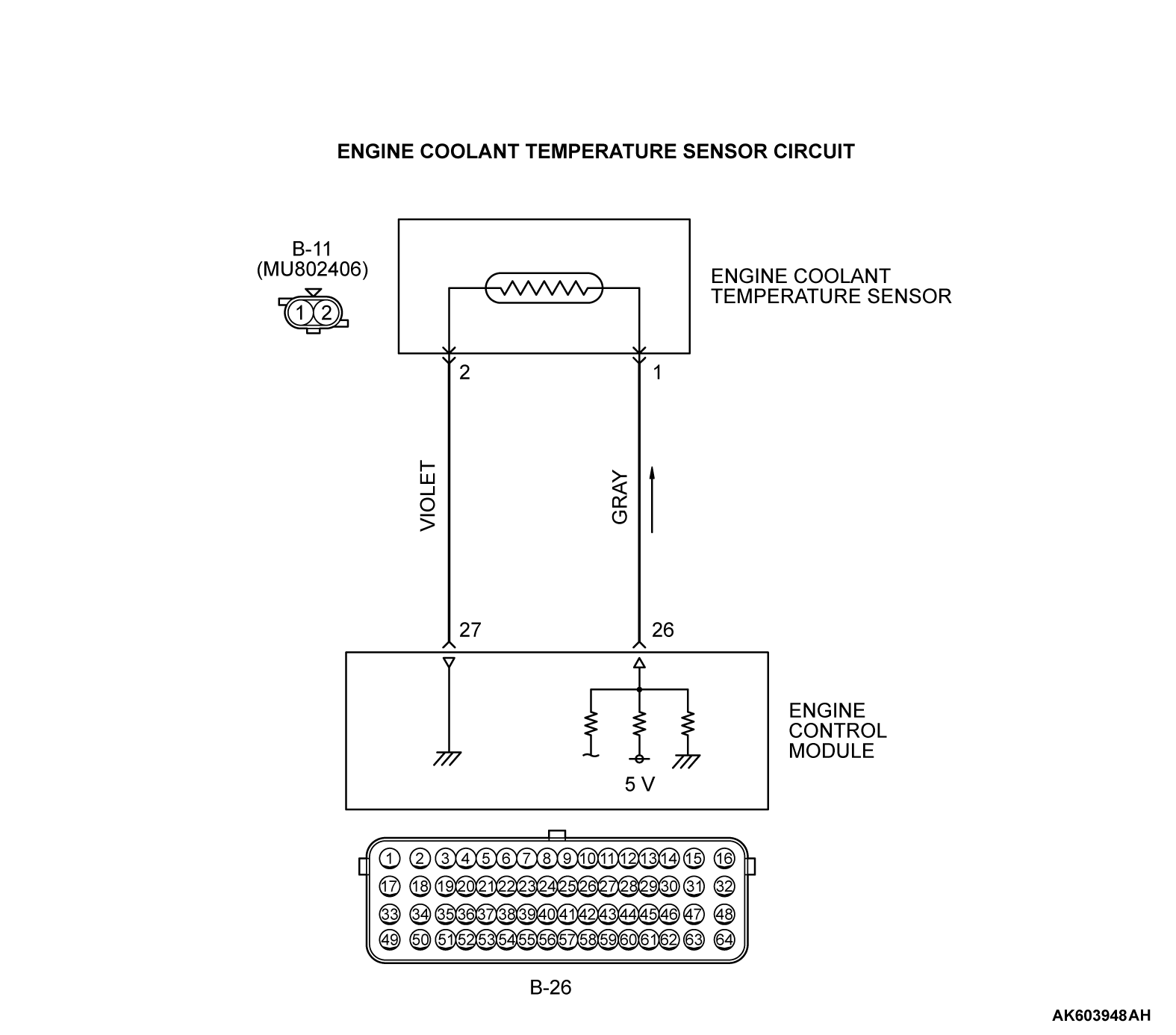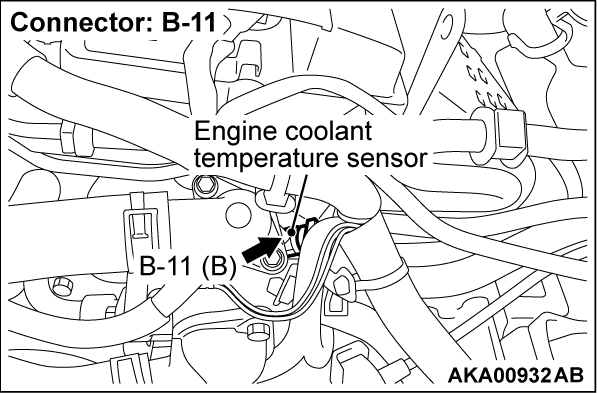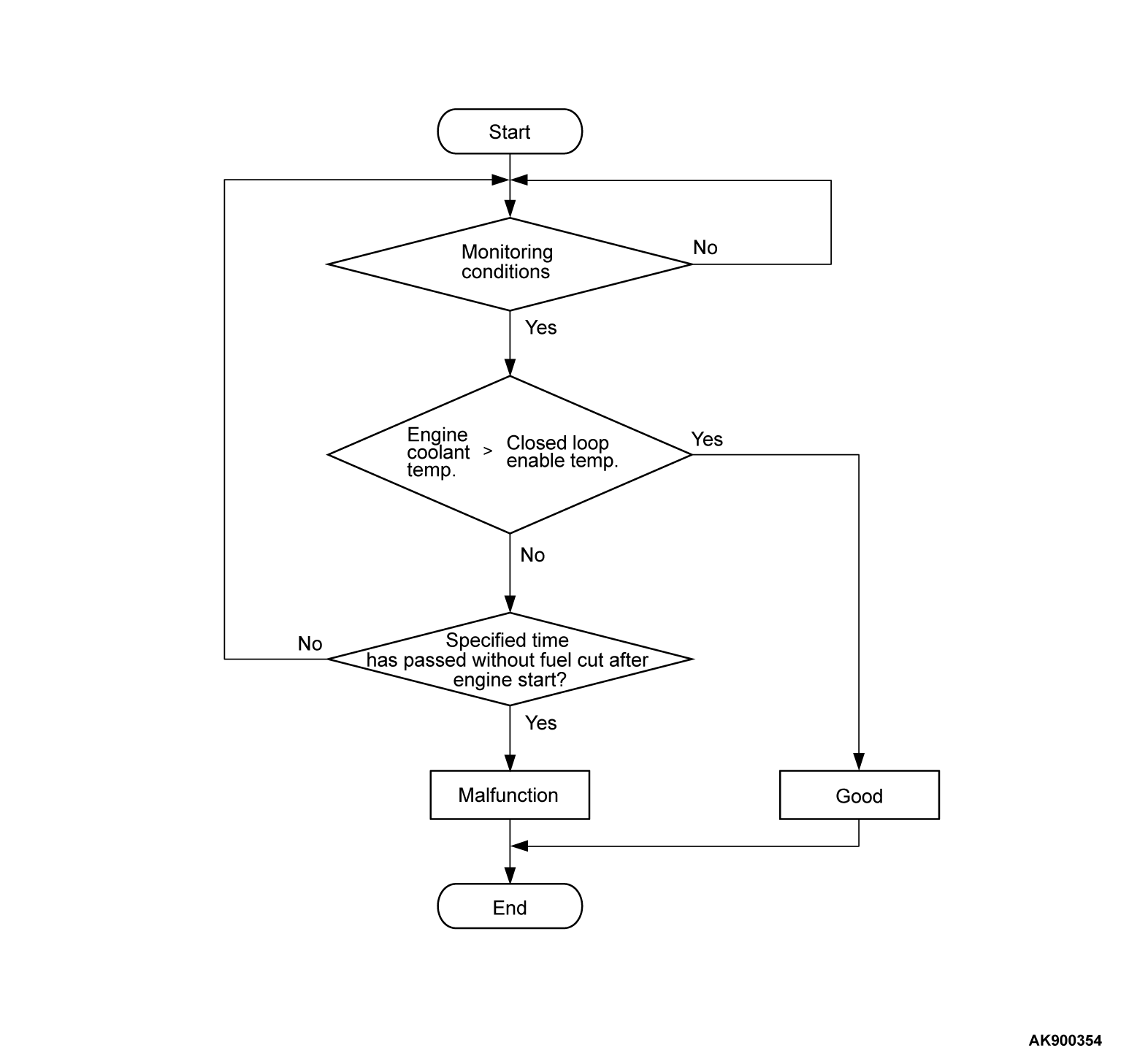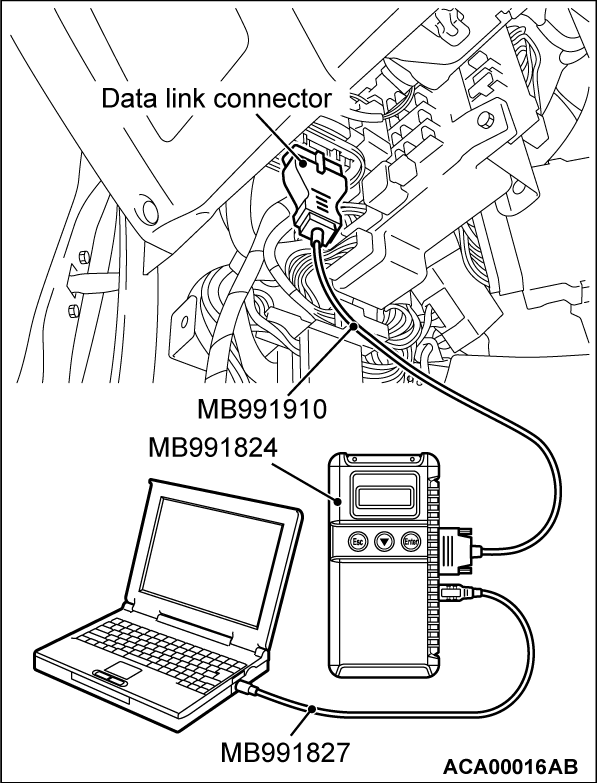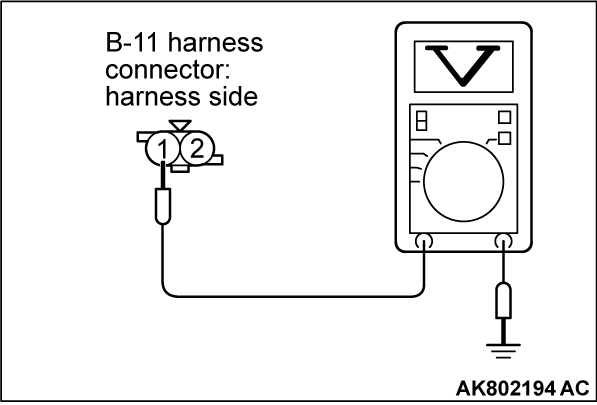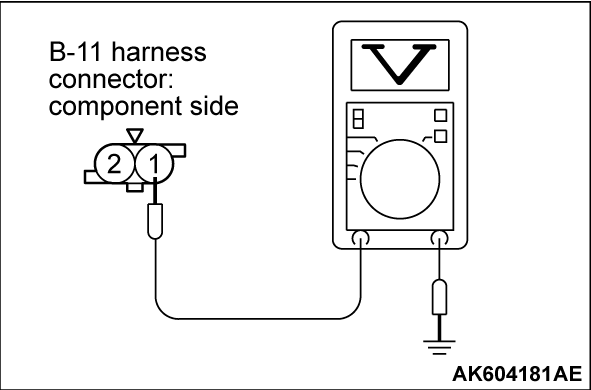DTC P0125: Insufficient Coolant Temperature for Closed Loop Fuel Control
CIRCUIT OPERATION
- 5-volt voltage is applied to the engine coolant temperature sensor output terminal (terminal No. 1) from the ECM (terminal No. 26) via the resistor in the ECM. The ground terminal (terminal No. 2) is grounded with ECM (terminal No. 27).
- The engine coolant temperature sensor is a negative temperature coefficient type of resistor. It has the characteristic that when the engine coolant temperature rises the resistance decreases.
- The engine coolant temperature sensor output voltage increases when the resistance increases and decreases when the resistance decreases.
TECHNICAL DESCRIPTION
- The engine coolant temperature sensor converts the engine coolant temperature to a voltage and outputs it.
- The ECM checks whether this voltage is within a specified range.
DESCRIPTIONS OF MONITOR METHODS
- Engine coolant temperature sensor output voltage drops from over 40°C (104°F) to under 40°C (104°F) and keeps under 40°C (104°F) for 5 minutes.
- Engine coolant temperature sensor output voltage does not reach closed loop enable temperature within specified period when engine coolant temperature sensor output voltage at engine start is under 7°C (45°F).
MONITOR EXECUTION
- Continuous
MONITOR EXECUTION CONDITIONS (Other monitor and Sensor)
Other Monitor (There is no temporary DTC stored in memory for the item monitored below)
- Not applicable
Sensor (The sensor below is determined to be normal)
- Mass airflow sensor
- Intake air temperature sensor
Check Conditions, Judgment Criteria
- Engine coolant temperature decreases from more than 40°C (104°F) to less than 40°C (104°F).
- Then the engine coolant temperature is less than 40°C (104°F) for 5 minutes.
- However, time is not counted when fuel is shut off.
DTC SET CONDITIONS <Range/Performance problem - low input (Time to reach closed loop temperature)>
Check Conditions, Judgment Criteria
- About 90 - 300 seconds have passed for the engine coolant temperature to rise to about 0°C (32°F) after starting sequence was completed.
- However, time is not counted when fuel is shut off.
FAIL-SAFE AND BACKUP FUNCTION
- Control as if the engine coolant temperature is 80°C (176°F).
DIAGNOSIS
Required Special Tool:
- MB991958: Scan Tool (M.U.T.-III Sub Assembly)
- MB991824: V.C.I.
- MB991827: USB Cable
- MB991910: Main Harness A
STEP 1. Using scan tool MB991958, check data list item 6: Engine Coolant Temperature Sensor.
| caution | To prevent damage to scan tool MB991958, always turn the ignition switch to the "LOCK" (OFF) position before connecting or disconnecting scan tool MB991958. |
(1) Connect scan tool MB991958 to the data link connector.
(2) Turn the ignition switch to the "ON" position.
(3) Set scan tool MB991958 to the data reading mode for item 6, Engine Coolant Temperature Sensor.
- The engine coolant temperature and temperature shown with the scan tool should approximately match.
(4) Turn the ignition switch to the "LOCK" (OFF) position.
Is the sensor operating properly?
STEP 2. Measure the sensor output voltage at engine coolant temperature sensor connector B-11 by backprobing.
(1) Do not disconnect the connector B-11.
(2) Turn the ignition switch to the "ON" position.
(3) Measure the voltage between terminal No. 1 and ground by backprobing.
- When engine coolant temperature is -20°C (-4°F), voltage should be between 3.9 and 4.5 volts.
- When engine coolant temperature is 0°C (32°F), voltage should be between 3.2 and 3.8 volts.
- When engine coolant temperature is 20°C (68°F), voltage should be between 2.3 and 2.9 volts.
- When engine coolant temperature is 40°C (104°F), voltage should be between 1.3 and 1.9 volts.
- When engine coolant temperature is 60°C (140°F), voltage should be between 0.7 and 1.3 volts.
- When engine coolant temperature is 80°C (176°F), voltage should be between 0.3 and 0.9 volt.
(4) Turn the ignition switch to the "LOCK" (OFF) position.
Is the measured voltage within the specified range?
STEP 3. Check harness connector B-11 at engine coolant temperature sensor for damage.
Is the harness connector in good condition?
STEP 4. Using scan tool MB991958, check data list item 6: Engine Coolant Temperature Sensor.
(1) Turn the ignition switch to the "ON" position.
(2) Set scan tool MB991958 to the data reading mode for item 6, Engine Coolant Temperature Sensor.
- The engine coolant temperature and temperature shown with the scan tool should approximately match.
(3) Turn the ignition switch to the "LOCK" (OFF) position.
Is the sensor operating properly?
STEP 5. Check harness connector B-11 at engine coolant temperature sensor for damage.
Is the harness connector in good condition?
STEP 6. Measure the sensor supply voltage at engine coolant temperature sensor harness side connector B-11.
(1) Disconnect the connector B-11 and measure at the harness side.
(2) Turn the ignition switch to the "ON" position.
(3) Measure the voltage between terminal No. 1 and ground.
- Voltage should be between 4.5 and 4.9 volts.
(4) Turn the ignition switch to the "LOCK" (OFF) position.
Is the measured voltage between 4.5 and 4.9 volts?
STEP 7. Check harness connector B-26 at ECM for damage.
Is the harness connector in good condition?
STEP 8. Check the continuity at engine coolant temperature sensor harness side connector B-11.
(1) Disconnect the connector B-11 and measure at the harness side.
(2) Check for the continuity between terminal No. 2 and ground.
- Continuity (2 ohms or less)
Does continuity exist?
STEP 9. Check harness connector B-26 at ECM for damage.
Is the harness connector in good condition?
STEP 10. Check for harness damage between engine coolant temperature sensor connector B-11 (terminal No. 2) and ECM connector B-26 (terminal No. 27).
Is the harness wire in good condition?
STEP 11. Check the engine coolant temperature sensor.
STEP 12. Check harness connector B-26 at ECM for damage.
Is the harness connector in good condition?
STEP 13. Check for harness damage between engine coolant temperature sensor connector B-11 (terminal No. 1) and ECM connector B-26 (terminal No. 26).
Is the harness wire in good condition?
![[Previous]](../../../buttons/fprev.png)
![[Next]](../../../buttons/fnext.png)
